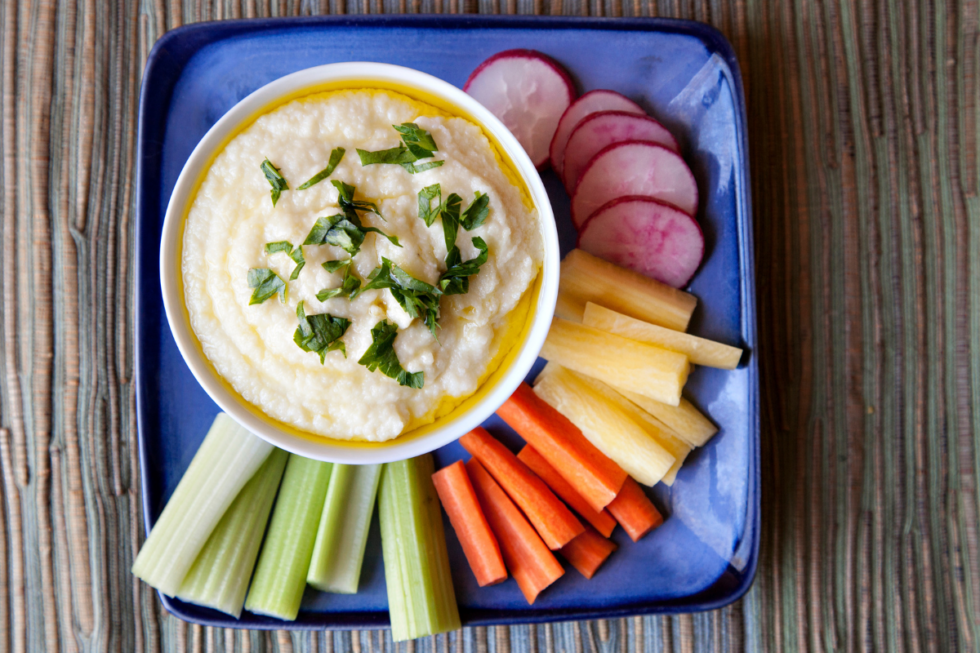
Low Histamine Roasted Garlic Cauliflower Hummus Recipe (also Low Lectin, Low Oxalate)
For a while now, I’ve been eating low lectin recipes. It’s made such a difference in how I feel.
See, lectins can increase mast cell activation.
This means high lectin foods can make Mast Cell Activation Syndrome and Histamine Intolerance worse.
Curious about the most immediate difference I noticed when I started eating low lectin?
The burning in my joints stopped within just a couple weeks of reducing lectins.
These big improvements were worth giving up high lectin foods.
But I missed some of my old favorites.
I was eating a lot of hummus made from chickpeas before I started eating low lectin. It had become a staple food for me.
I liked it because homemade hummus is easy to prepare. And I could make it low histamine!
I’d take it to gatherings as an appetizer.
Related Article: 6 Tips for Thriving at Parties, Holidays, and Special Events for Mast Cell Activation Syndrome and Histamine Intolerance
And at home, I added it to my gluten free wraps. I also enjoyed it as a dairy free dip for my veggies.
I really liked the creamy texture, especially paired with a crunchy, gluten free cracker or crispy vegetables, like chopped carrots or broccoli florets.
But chickpeas are high lectin. That meant hummus was one of the foods I gave up.
So, I was intrigued when I came upon this low lectin, histamine-busting way to make hummus.
It turned out to be delicious! Now, I’m so excited to share this recipe with you!
This cauliflower hummus recipe is:
- Low histamine
- Low oxalate
- Low lectin
- Gluten free
- Dairy free
Keep reading to get the recipe and learn more about lectins.
Could eating low lectin help relieve some of your MCAS related symptoms?
Let’s start by looking at what makes this recipe low histamine and low lectin.
Cauliflower Hummus Recipe
Hummus is a traditional middle eastern dish often served with pita bread. It’s so delicious and versatile that it’s become popular worldwide.
Here are some of the traditional hummus recipes ingredients and what to potentially watch out for if you have Mast Cell Activation Syndrome and the related intolerances:
- Chickpeas – low histamine, high lectin
- Paprika – high histamine, medium oxalate
- Tahini – made from sesame seeds which are low histamine, low lectin, but high oxalate
- Lemon juice – higher histamine, may be tolerated in small amounts
- Olive oil – higher histamine, may be tolerated because it increases DAO, a histamine degrading enzyme
- Garlic – low histamine, low lectin
- Salt – low histamine, low lectin
Related Article: Oxalates and the Mast Cell Activation Syndrome & Histamine Intolerance Connection
You can see that some of those ingredients wouldn’t work if you were doing a low lectin, low histamine diet.
And when one of the main ingredients, chickpeas, is out, what can you do?
Low Histamine, Low Lectin, Cauliflower and Garlic Hummus
When I was writing this post, I found out that hummus means chickpea in Arabic! So, I guess hummus isn’t exactly the right name for this recipe if you leave out the chickpeas!
But we have to get creative with our language and our recipes with Mast Cell Activation Syndrome and Histamine Intolerance. So, because I made this to replace hummus, I still call this recipe “hummus”.
Whatever you want to call it, it’s delicious.
Cauliflower blends up to be so creamy and smooth — the desired consistency you look for in hummus.
And when paired with roasted garlic, you get lots of flavor from this tasty hummus recipe.
Both cauliflower and garlic are low histamine and low lectin (and low oxalate if you need that, too).
And both can support your health. Did you know that garlic contains compounds shown to have these properties:
- Antioxidant
- Anti-inflammatory
- Antibacterial
- Antifungal
- Immunomodulatory
- Hepatoprotective (liver)
- Neuroprotective (brain)
- Digestive system protective
And cauliflower contains:
- Fiber – can help lower risk of some digestive conditions
- Vitamin C – supports mast cells, reduces inflammation, and acts as natural antihistamine
- Magnesium – supports mast cells and histamine, regulates nerve function, and more!
- B6 – supports DAO levels (diamine oxidase is a histamine-degrading enzyme)
Before we get to this healthy hummus recipe, I want to share with you a little more on lectins.
What are lectins? And why are they a problem?
Keep reading to find out.
What Are Lectins?
Lectins are proteins found in certain plant foods. The plants use these lectins to protect themselves from being eaten.
Some foods are much higher in lectins than others. These are some higher lectin foods:
- Beans and lentils (including chickpeas)
- Cucumbers
- Tomatoes
- Bell peppers
- Eggplant
- Grains (wheat, corn, rice, quinoa, etc.)
- Potatoes (yukon, russet, red, etc. – not sweet potatoes)
- Pumpkin seeds
- Sunflower seeds
- Soy
- Peanuts
- Cashews
- Squashes (yellow, zucchini, winter squashes like butternut)
Some lectins are known to open the gut barrier. For example, gluten found in wheat, rye, and barley can break down the gut barrier.
This can cause Leaky Gut. And Leaky Gut can lead to mast cell activation and even potentially an imbalance in gut bacteria that can lead to SIBO.
(So, for your hummus, skip the pita and make my low histamine flatbread instead!)
Lectins may also contribute to autoimmunity.
And some studies have shown that lectins may interfere with the functions of hormones, cytokines, and neurotransmitters.
Common symptoms of Lectin Intolerance can include:
- Fatigue
- Lack of motivation
- Brain fog
- Joint pain
- Skin breakouts
- Digestive issues such as:
- Bloating
- Gas
- Nausea
- Irritable Bowel Syndrome
Can Eating Low Lectin Help You?
A low lectin diet isn’t the answer for everyone. But it definitely helped me.
I’ve now figured out my own food triggers. I hope you can figure out yours, too. You can download my starter Low Histamine Food list here.
If you think you might have food sensitivities beyond histamines, work with a provider who can help guide you.
You don’t want to give up foods unnecessarily.
But if you find out you do have Lectin Intolerance, you can still enjoy a lot of tasty foods. Just like this low histamine, low lectin cauliflower hummus recipe.
My Top Tip for Roasting Garlic
This is a super easy, versatile recipe. You can use this cauliflower hummus like a dip. Or spread it on veggies. I even use it to make a kind of white sauce base for my low histamine pizza.
The part that takes the longest is roasting the garlic. But that’s not hands-on time.
Still, if you are like me, you love garlic in a lot of recipes. So why not make a bunch at once and freeze it to have on hand anytime? Prep once, eat anytime!
I learned an easy way to make a bunch of roasted garlic at once. I landed on this method by a funny accident.
I was trying Kroger Pickup for my groceries. I had ordered 5 heads of garlic to make this hummus recipe.
I pulled up to the pickup spot. The groceries were loaded in my trunk. I checked the receipt. Everything looked in order, and I drove home! Unloading the groceries though, I found I didn’t get 5 heads of garlic. I got 5 POUNDS of garlic!
Have you ever seen 5 pounds of garlic?
That much garlic filled 2 very large grocery bags! I can’t imagine what the grocery pickers thought I was making if they read 5 heads of garlic as 5 pounds.
Lol! So, I had to figure out what to do with all this garlic! Kroger didn’t want it back.
I gave most of it away to neighbors and friends.
Even still, I had a lot of garlic left. I roasted what I kept and froze it. I’ve included my super easy, mass production method for roasted garlic.
Roasting Garlic and Freezing It
Here’s how to roast a lot of garlic, all at once!
- Preheat oven to 400 degrees F.
- Remove most of the outer papery skin leaving enough so that the garlic head stays intact.
- Cut the top off each head of garlic so you can see the top of the cloves. Drizzle with 1 Tablespoon of olive oil (coconut oil or ghee would also work).
- Place 1 head of garlic each into each cup of a muffin tin. You can make up to about 12 at a time this way!
- Cover with a second muffin tin, upside down.
- Bake for 30 minutes until the garlic cloves are mushy and roasted.
- Let cool.
- Squeeze the garlic cloves out of the heads.
- To freeze, you can use Souper Cube “ice cube” trays and put about 4-5 cloves of garlic in each section.
- Cover cloves with olive oil and freeze until solid. Pop the cubes of frozen roasted garlic out of the ice cube trays and store in a container in the freezer.
You’ll always have roasted garlic on hand for this and other recipes!
What to Eat with Cauliflower Hummus
You can serve it with:
- Cassava Tortillas – Low Lectin and Medium Oxalate (cut into chips)
- Carrot and celery sticks
- Flax Crackers – Low Lectin and Medium Oxalate
- Cassava Crackers – Low Lectin, Low FODMAP, and Medium Oxalate
- Herbed Olive Oil and Cassava Flatbread – Low Lectin, Low FODMAP, and Medium Oxalate
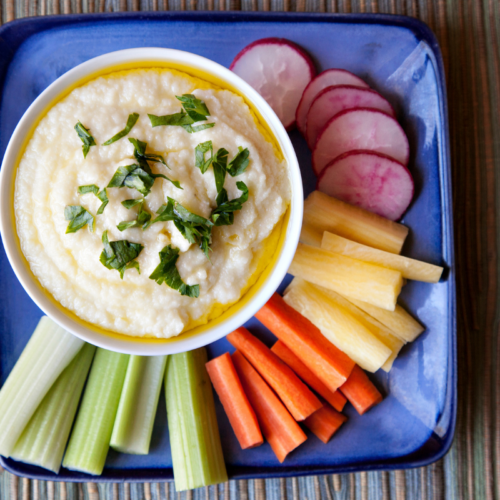
Low Histamine Cauliflower Hummus
Equipment
- Food Processor optional
- Sharp Knife
- Silicone Mat OR
- Unbleached Parchment Paper optional
Ingredients
- 1 head Cauliflower
- 1 head Roasted Garlic (see recipe below) OR
- ½ clove Garlic optional raw, chopped
- ½ cup Kasandrinos Olive Oil
- 1 Tablespoon Kasandrinos Olive Oil for roasting garlic
- 1-2 Tablespoons Kasandrinos Olive Oil optional garnish
- ½ lemon juiced OR
- ⅛ teaspoon Camu Camu Powder optional for the tartness if sensitive to lemons
- Parsley for garnish
- 1 teaspoon Redmond Real Salt (can adjust to personal taste)
Instructions
- Preheat oven to 400 degrees F. (If using raw garlic skip steps 1 – 5 and instead just mince your raw garlic and skip to step 6.)
- If roasting garlic, (recommended) remove most of the outer papery skin leaving enough so that the garlic head stays intact.
- Cut the top off the head of garlic so you can see the top of the cloves. Drizzle with 1 Tablespoon of olive oil.
- Place garlic on a baking sheet lined with a silicone mat or parchment paper (lining is optional but makes clean up easier).
- Bake for 30 minutes until the garlic cloves are mushy and roasted.
- While garlic is roasting, bring a pot of water to a boil.
- While water is heating up, wash and cut your head of cauliflower into smaller pieces (about 1-2 inch florets).
- Add cauliflower florets to boiling water and boil until soft (about 10 -15 minutes).
- While cauliflower boils, add olive oil, lemon juice, and sea salt to your food processor or high speed blender (Don’t blend yet, this is just to prep. If you have frozen, roasted garlic or raw garlic, you can add this, too.)
- When cauliflower is soft, strain and let cool until your garlic is finished roasting. (If you are eating this as a dip for your veggies, you can prep your veggies during this time.)
- When garlic is finished (should be mushy and soft), add cauliflower to the food processor or high speed blender that already holds your other ingredients.
- Squeeze the soft garlic out of the skins and add to the food processor or high speed blender.
- Blend on high until smooth.
- To serve, you can eat it warm or let it chill in the refrigerator. When ready to eat, garnish with chopped parsley and extra virgin olive oil if desired.
Notes
Nutrition
What are your favorite veggies to dip in hummus? Tell me in the comments below!
More Low Histamine Cauliflower Recipes
- Roasted Cauliflower with Cherries and Pecans – Low Lectin, Lower Oxalate, with Low Salicylate Option
- Cassava Crust Pizza – Low Oxalate and Low Lectin
- Creamy Cauliflower Veggie Soup – Low Oxalate to Medium Oxalate, and Low Lectin
Some links in this website are affiliate links, which means Mast Cell 360 may make a very small commission if you purchase through the link. It never costs you any more to purchase through the links, and we try to find the best deals we can. We only recommend products that we love and use personally or use in the Mast Cell 360 practice. Any commissions help support the newsletter, website, and ongoing research so Mast Cell 360 can continue to offer you free tips, recipes, and info. Thank you for your support!
References
Anogeianaki, A., et al. (2010). Vitamins and mast cells. International journal of immunopathology and pharmacology, 23(4), 991–996. https://doi.org/10.1177/039463201002300403
FoodData Central. (n.d.). https://fdc.nal.usda.gov/fdc-app.html#/food-details/169986/nutrients
Johnston, C. S., Martin, L. J., & Cai, X. (1992). Antihistamine effect of supplemental ascorbic acid and neutrophil chemotaxis. Journal of the American College of Nutrition, 11(2), 172–176.
Kapusta-Duch, J., et al. (2012). The beneficial effects of Brassica vegetables on human health. Roczniki Panstwowego Zakladu Higieny, 63(4), 389–395.
Milajerdi, A., et al. (2021). Association of Dietary Fiber, Fruit, and Vegetable Consumption with Risk of Inflammatory Bowel Disease: A Systematic Review and Meta-Analysis. Advances in Nutrition, 12(3), 735–743. https://doi.org/10.1093/advances/nmaa145
Shang, A., et al. (2019). Bioactive Compounds and Biological Functions of Garlic (Allium sativum L.). Foods (Basel, Switzerland), 8(7), 246. https://doi.org/10.3390/foods8070246
van der Schoot, A., et al. (2022). The Effect of Fiber Supplementation on Chronic Constipation in Adults: An Updated Systematic Review and Meta-Analysis of Randomized Controlled Trials. The American journal of clinical nutrition, 116(4), 953–969. https://doi.org/10.1093/ajcn/nqac184

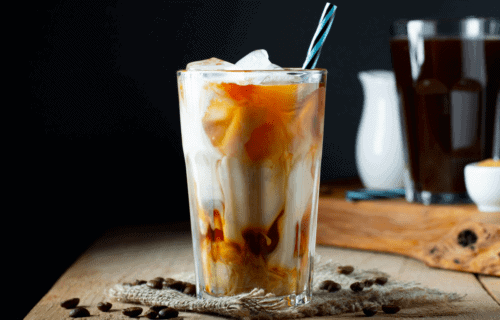
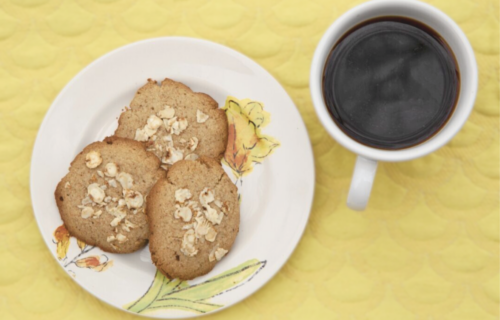
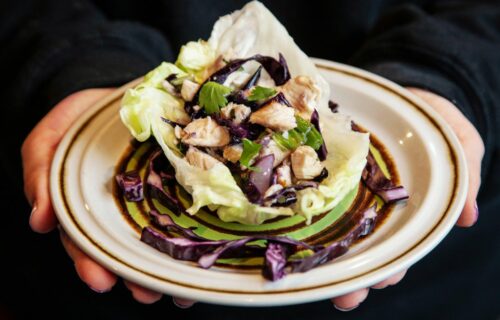
Can you freeze this hummus?
Yes, it freezes well.
How much camu camu powder would you add instead of lemon? Could you also sub cream of tartar?
You might try a 1/8 tsp camu camu and adjust to taste.
I don’t think cream of tartar would work so well, and it can be a histamine/mast cell trigger.
What if you react to lemon (citrus) and camu camu… Is there something else ?
The camu camu or any citrus provides a little bit of tartness, but it isn’t 100% needed for the recipe. You might try to substitute other types of spices for your own unique blend.
I use Malic Acid (from apples) in place of lemon juice and it adds just the right tartness and tastes like lemon to boot! I buy it on Amazon from Nutricost. It might also be helpful to you and doesn’t trigger a histamine response (my experience).
Hi!
Thanks for sharing! While we don’t have any specific information on malic acid, it’s great you are experimenting and finding things that work for you.
Best,
Kam
your website, recipes and food list have helped me every single day! THANK YOU so much for all you do, and for sharing this with us! 💕
Here’s a couple things I’ve used for dressings & other ideas; Pomegranate juice added to olive oil and salt & pepper makes a great dressing and the pomegranate gives that sort of vingeary flavor like most salad dressings! I also realized that artichoke hearts remind me a lot of avocado (I miss it dearly)! So that would be a good creamy alternative! I also recently saw Sushi Burritos online (and although I’ll be opting for a vegan version) it’s a great way to switch up the usual rice and veggies dishes that we often eat! (It had cucumber slices, carrot slices, cilantro, chicken, rice noodles and I may add raw pine nuts for crunch!) 😊 I also want to experiment with a cauliflower Alfredo and zucchini fries soon!! Love that we can all help eachother in this process!
Thanks for sharing Larina! 🙂
Hoping for a recipe tab!
https://mastcell360.com/category/recipes/
Delicious hummus recipe! makes me forget that I’m not eating real chickpeas for the base. Thank you Mast Cell 360 Team!
How long can you keep the frozen garlic cubes stored in the freezer?
Hello!
Depending on how histamine sensitive you are, 4-16 weeks. If you are on the more sensitive side, keep to the lower end of that spectrum.
Your recipe are amazing. Helping me so much. Just so you know, the liquid ‘better stevia’ that you link to in amazon is 11% cane sugar and not pure. I found out the hard way…unfortunately NOW brand which used to be reliable has shifted over time. So many stevia are tricky these days
Hi T, Thank you so much for being a part of our community. We appreciate your feedback and will look into this right away! Thank you!
This looks nice! Question though:
Is it supposed to be ‘clove’ instead of ‘head’ here?
“1 head roasted garlic or 1/2 clove of raw garlic, chopped”
Sorry, not a native English speaker so this got me confused.
We are using garlic as a flavoring element in this recipe.
The flavor of garlic can change quite a bit once it is roasted. It is sweeter and much softer.
If you want to use the roasted garlic, you can use a lot more without it being overpowering. One head roasted garlic will be fine.
However, if you want a stronger, spicier taste, the raw garlic at ½ clove will be plenty.
First of all, you’re amazing. I have recently been diagnosed with histamine intolerance and its been so confusing and hard to figure out what to eat, I have been feeling so lost. Thank goodness I found you. You explain things so thoroughly and in such a digestible way. Your recipes and ingredient links make this diagnosis much less overwhelming and doable. You are incredibly appreciated!!!!!
Hi Sara,
Thank you so much for your kind words. We are so glad to hear the resources have been a help!
This is absolutely delicious! A game changer for me who LOVES to make my own hummus. Thanks a million. Adding this to my list!
By the way I added tahini, ground sesame seed paste, which makes it taste even more like hummus.
Hi Suzanna,
Tahini does pack a big flavor. Sesame seeds are an oxalate though, so for those who are looking for low oxalate, they’ll need to skip the tahini. But sesame seeds are low histamine.
Can you make this recipe easily printable and adjustable for serving sizes like your other recipes please? Just starting this journey and I need printed recipes to help me along.
Hi Laura,
Thanks for your feedback. We are so glad to hear you like the new recipe cards! We do hope to go back to previous recipes and update them in this way as well, but it is an ongoing project we work on as time permits. Hope you like the recipe! This is one of Beth’s favorites!
It doesn’t say anywhere how much salt to put in–or I am brain fogged and can’t find it!
Hi Jeanne, Thanks so much for bringing this to our attention so we can fix it! The recipe has been updated to include 1 tsp of salt with more or less for personal taste/preference.
Is this high salicylate?
Hi Lin, This recipe does contain olive oil so it will be higher in salicylates. You can always cross reference our recipes with our low salicylate food list here: https://mastcell360.com/salicylates-and-salicylate-foods-what-to-know-when-you-have-mast-cell-activation-syndrome-or-histamine-intolerance/
And find recipes with low salicylate options here: https://mastcell360.com/category/recipes/low-salicylate/
The Cauliflower low-histamine, low-oxalate, low-lectin Hummus is fantastic! It is one of only a few recipes that work for me, and it is absolutely delicious. I modified it slightly because of what I had on hand (or needed to for me), and it worked fine. One head of black (aged) garlic tasted great. Avocado oil works best for me, and tasted fine. I didn’t have Camu Camu powder, so I used my usual citrus-substitute, Apple Cider Vinegar, and it worked fine. For a slight extra kick, I used Black Garlic Salt (Savory Spice), and it was perfect. Thanks for a family new fave!!!
(5 out of 5 stars)